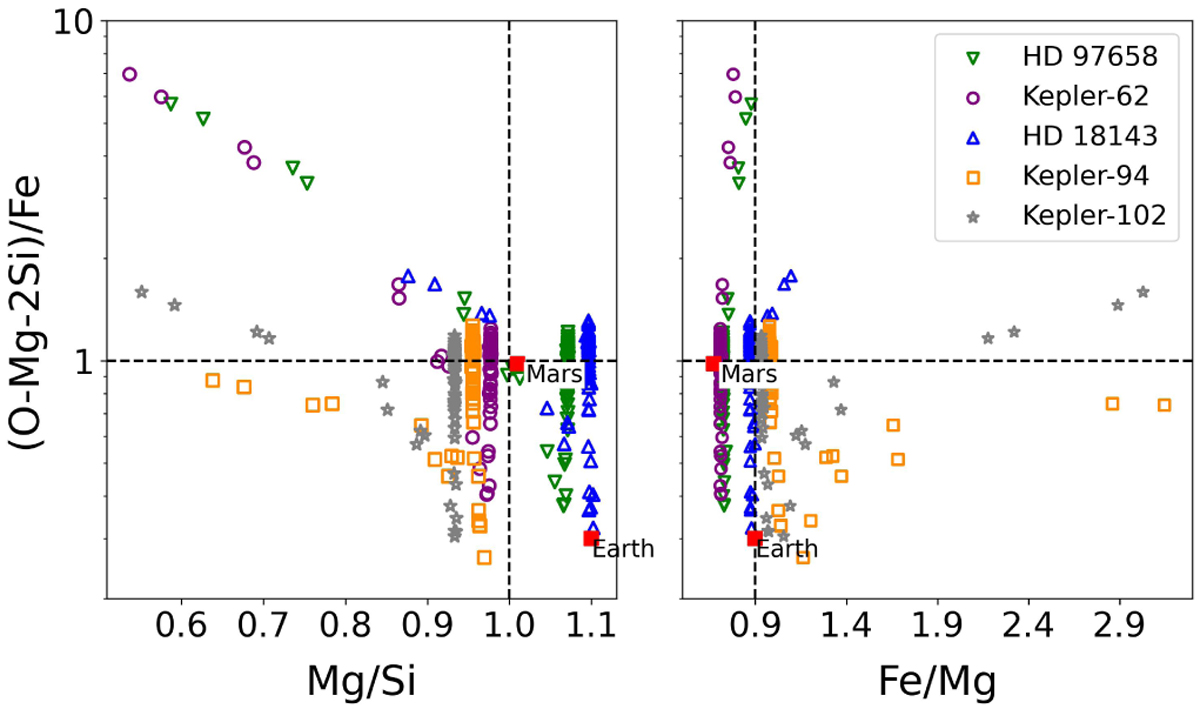Fig. 11

Download original image
(O–Mg–2Si)/Fe vs. Mg/Si and (O–Mg–2Si)/Fe versus Fe/Mg plots for the sample of the simulated planets around four different stars. The dashed black lines divide the planets into different types predicting different interior properties. On the left, Mg/Si = 1.0 is the division between more pyroxene-rich (Mg/Si < 1.0) and olivine–pyroxene mixed (Mg/Si > 1.0) mantles. On the right, the Fe/Mg = 0.9 line separates the planets with potentially smaller cores (Fe/Mg < 0.9) and potentially bigger cores (Fe/Mg > 0.9). Above the horizontal line at (O–Mg–2Si)/Fe = 1, the planets are expected to be more oxidized, and below typically less oxidized. The values for the Earth (Wang et al. 2018) and Mars (Yoshizaki & McDonough 2020) are shown for reference. The planetesimal formation time of 0.8 Myr is assumed here.
Current usage metrics show cumulative count of Article Views (full-text article views including HTML views, PDF and ePub downloads, according to the available data) and Abstracts Views on Vision4Press platform.
Data correspond to usage on the plateform after 2015. The current usage metrics is available 48-96 hours after online publication and is updated daily on week days.
Initial download of the metrics may take a while.


